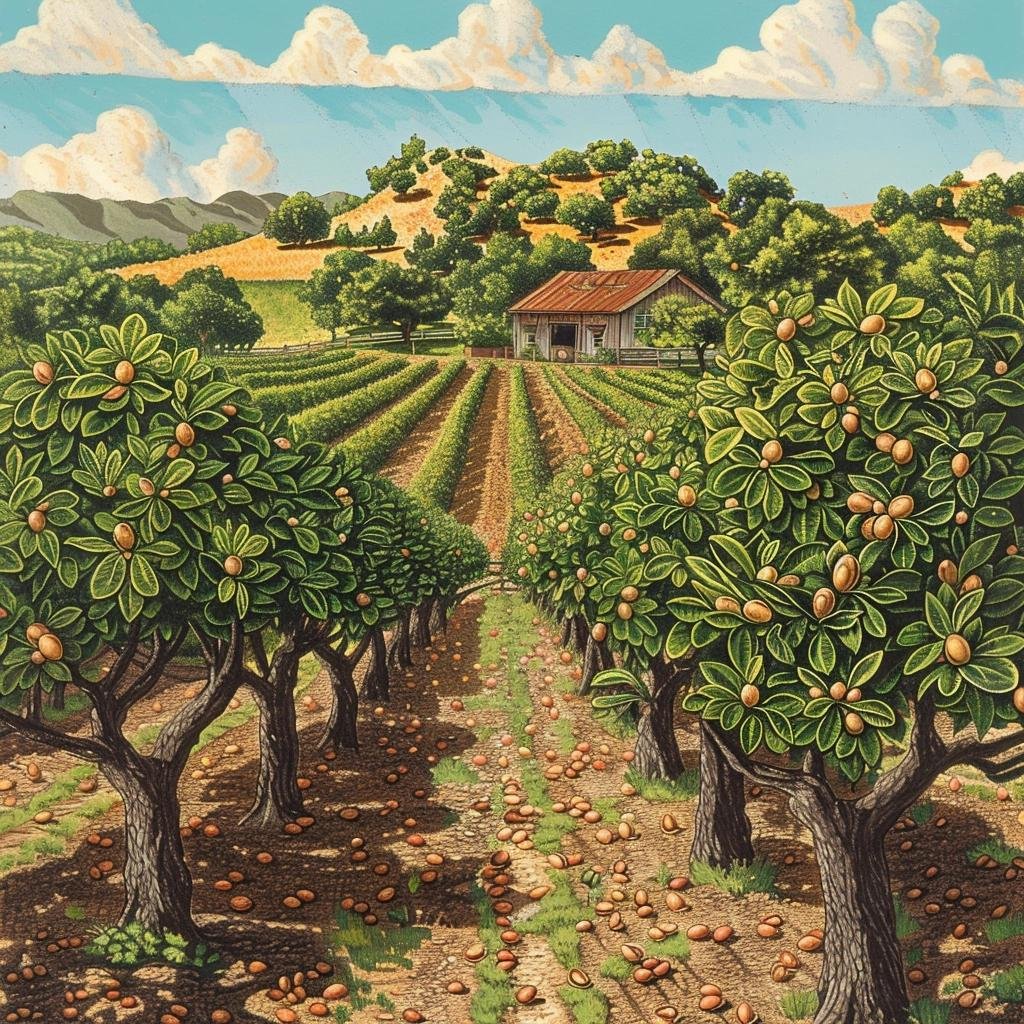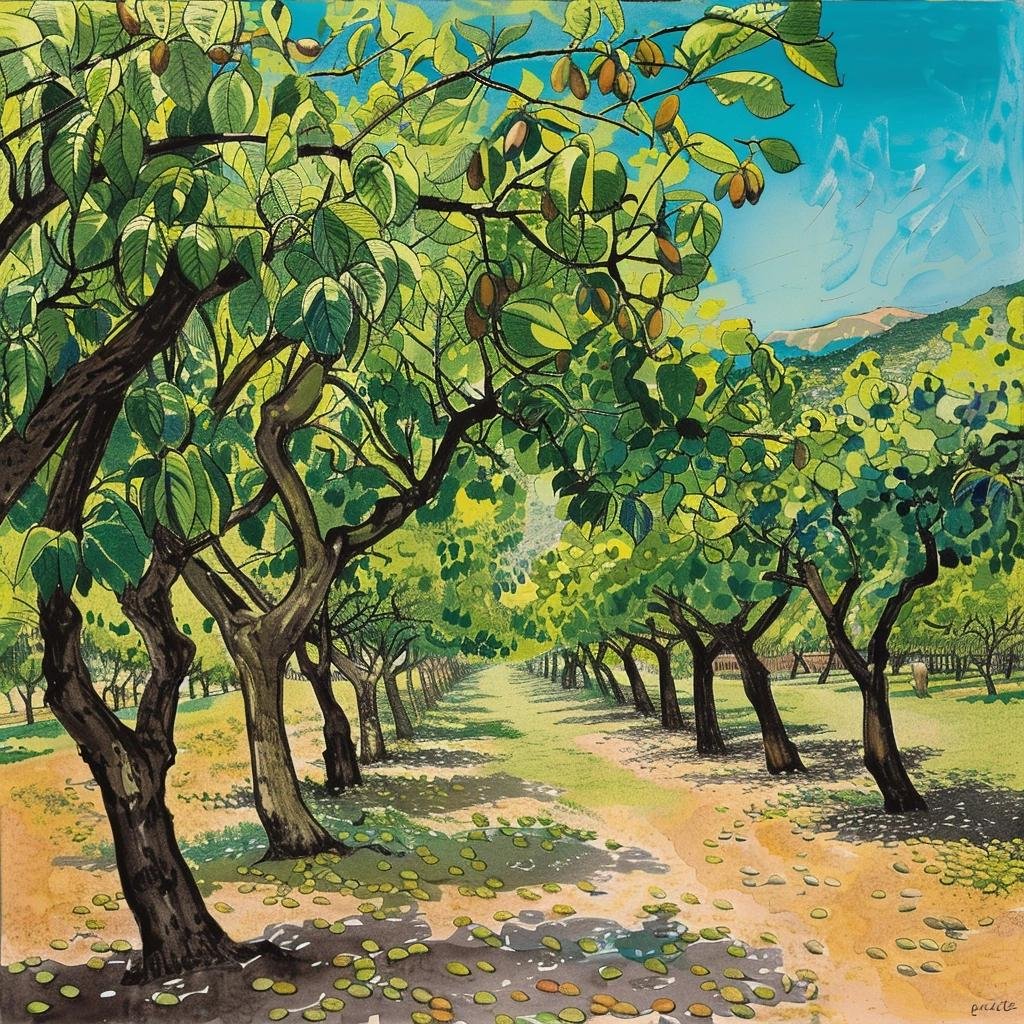Ahh, the joys of growing your own pistachios! If you’re anything like me, the idea of strolling through your own lush, verdant pistachio orchard, plucking those delightful, crunchy nuts straight from the tree is enough to make your mouth water. But before you go nuts (pun intended) and start planting, there are a few key things to consider when it comes to successful pistachio cultivation. In this comprehensive guide, I’ll walk you through the basics of pistachio growing, from selecting the right cultivars for your climate to harvesting and storing your homegrown bounty. So, grab a handful of roasted pistachios, sit back, and let’s dive into the world of these fascinating, nutty trees!
The Basics of Pistachio Cultivation
Unlocking the Secrets of Pistachio Trees
First things first, let’s talk about the pistachio tree itself. These hardy, drought-tolerant plants are native to the Middle East and can thrive in a variety of climates, from hot and dry to more temperate regions. What makes them so unique is their ability to grow in poor, rocky soil and their resistance to pests and diseases. And get this – they’re actually a type of cashew, believe it or not! Fascinating, right? But don’t worry, you won’t be mistaking those bright green nuts for cashews anytime soon.
Understanding Pistachio Tree Requirements

Okay, so now that we know a bit more about the pistachio tree, let’s talk about what it needs to really flourish. These trees are super adaptable, but they do have a few specific requirements when it comes to soil, water, and climate. For starters, they prefer well-drained, slightly alkaline soil with a pH between 7.0 and 8.5. They can tolerate a bit of salinity, too, which is great if you live in a coastal region. As for water, pistachios are surprisingly drought-tolerant, but they do need about 30-40 inches of rainfall per year, or regular irrigation, to really thrive.
The Importance of Pollination
Now, let’s talk about the birds and the bees – or in this case, the bees and the pistachios. You see, pistachio trees are dioecious, which means they have separate male and female trees. In order to get those delicious nuts, you’ll need both a male and a female tree in close proximity to each other for proper pollination. The bees do most of the heavy lifting here, flitting from tree to tree and transferring the pollen. So, make sure you’ve got a good population of pollinator-friendly plants nearby to keep your pistachio orchard happy and productive.
Selecting the Right Pistachio Variety for Your Climate
Exploring the Diverse World of Pistachio Cultivars

Now that we’ve covered the basics, let’s talk about the different pistachio cultivars available and how to choose the best ones for your climate. There are several popular varieties, each with their own unique characteristics and growing requirements. For example, the Kerman cultivar is a classic choice that’s widely grown in California, while the Red Aleppo variety is known for its vibrant, reddish-pink shells. And let’s not forget about the Mediterranean-adapted Aegina cultivar, which thrives in warmer, drier climates.
Matching Cultivars to Your Growing Conditions
When selecting pistachio cultivars, it’s crucial to consider your local climate and soil conditions. For instance, if you live in a cooler, more temperate region, you might want to opt for a cultivar like the Lassen, which can tolerate lower temperatures better than some of the warmer-climate varieties. On the other hand, if you’re blessed with a hot, arid climate, the Kerman or Red Aleppo might be the way to go. Do your research, chat with local nurseries, and choose the cultivars that are best suited to your specific growing environment.
Planting and Caring for Pistachio Trees
Preparing the Perfect Planting Site

Alright, now that you’ve selected your pistachio cultivars, it’s time to get them in the ground! The first step is to choose a planting site that has plenty of sun exposure and good air circulation. Pistachios love the warmth, so aim for a spot that gets at least 6-8 hours of direct sunlight per day. And make sure the soil is well-draining – you don’t want your trees sitting in soggy, waterlogged conditions.
Proper Planting Techniques
When it comes to actually planting your pistachio trees, it’s important to follow best practices to give them the best possible start. Dig a hole that’s about twice the width of the tree’s root ball and just as deep. Gently place the tree in the hole, being careful not to damage the roots, and backfill with the original soil. Water thoroughly to settle the roots, and be sure to mulch around the base of the tree to help retain moisture.
Ongoing Maintenance and Care

Caring for pistachio trees doesn’t have to be a full-time job, but there are a few key tasks you’ll need to stay on top of. Regular pruning is important to maintain the tree’s shape and promote air circulation, which can help prevent disease. You’ll also want to keep an eye out for pests like aphids and mites, and address any issues quickly. And of course, don’t forget to water your trees, especially during the hot, dry summer months.
Optimizing Pistachio Harvest and Yield
Determining the Optimal Harvest Time

One of the most exciting parts of growing pistachios is the harvest, but timing is everything. You’ll want to keep a close eye on your trees as the nuts begin to ripen, typically in the late summer or early fall. The telltale sign is when the shells start to split open, revealing the delicious green nuts inside. But don’t wait too long – if you let them go too long, the shells will dry out and the nuts can start to fall off the tree.
Maximizing Your Pistachio Yield
To get the biggest, most bountiful harvest from your pistachio trees, there are a few tricks you can try. For one, make sure to provide adequate irrigation, especially during the critical nut-filling stage. You can also try thinning the fruit clusters to encourage larger nut size. And don’t forget about those pollinator-friendly plants we talked about earlier – keeping your bees happy and busy will work wonders for your yield.
Protecting Your Harvest from Pests and Elements
Once you’ve got your pistachios harvested, the work isn’t quite done yet. You’ll need to carefully store and protect your nuts to ensure maximum freshness and flavor. Start by curing the nuts in the sun for a few days to allow the shells to dry out completely. Then, store them in a cool, dry place, like a garage or shed. And be on the lookout for critters like squirrels and birds that might try to get their hands (or beaks) on your precious pistachio stash!
Storing and Enjoying Your Homegrown Pistachios
Proper Storage Techniques for Maximum Freshness
Now that you’ve got your freshly harvested pistachios, it’s time to make sure they stay as delicious and crunchy as the day they were picked. The key is to store them properly in a cool, dry place. I like to spread them out on a baking sheet and let them air-dry for a few days before transferring them to an airtight container or bag. This helps the shells dry out and prevents any moisture buildup, which can lead to mold or staleness.
Creative Ways to Enjoy Your Homegrown Nuts
The best part about growing your own pistachios is, of course, getting to enjoy them! Whether you like to snack on them straight out of the shell, use them in baking, or incorporate them into savory dishes, the possibilities are endless. Try roasting them with a bit of salt and spice for a tasty, satisfying snack. Or get creative and use them in homemade pesto, sprinkle them over salads, or even make a delicious pistachio-crusted fish or chicken.
Sharing the Pistachio Wealth with Friends and Family
And let’s not forget about sharing the love (and the nuts) with your friends and family! Nothing says “I care” like a jar of your own homegrown pistachios. They make a wonderful, thoughtful gift, and your loved ones will be amazed at your green thumb. So, don’t be stingy – spread the pistachio joy far and wide!
In conclusion, growing a thriving pistachio orchard can be a rewarding and bountiful endeavor. By understanding the unique requirements of pistachio trees, selecting the appropriate cultivars, planting and caring for your trees with diligence, and properly harvesting and storing your nuts, you can look forward to a plentiful pistachio harvest in 2024 and beyond. The key is to research, plan, and execute each step of the pistachio cultivation process with care and attention to detail. With the right approach, you can enjoy the fruits of your labor and savor the delicious, fresh-picked pistachios grown right in your own backyard. So why not start planning your pistachio oasis today and reap the rewards for years to come?
<
